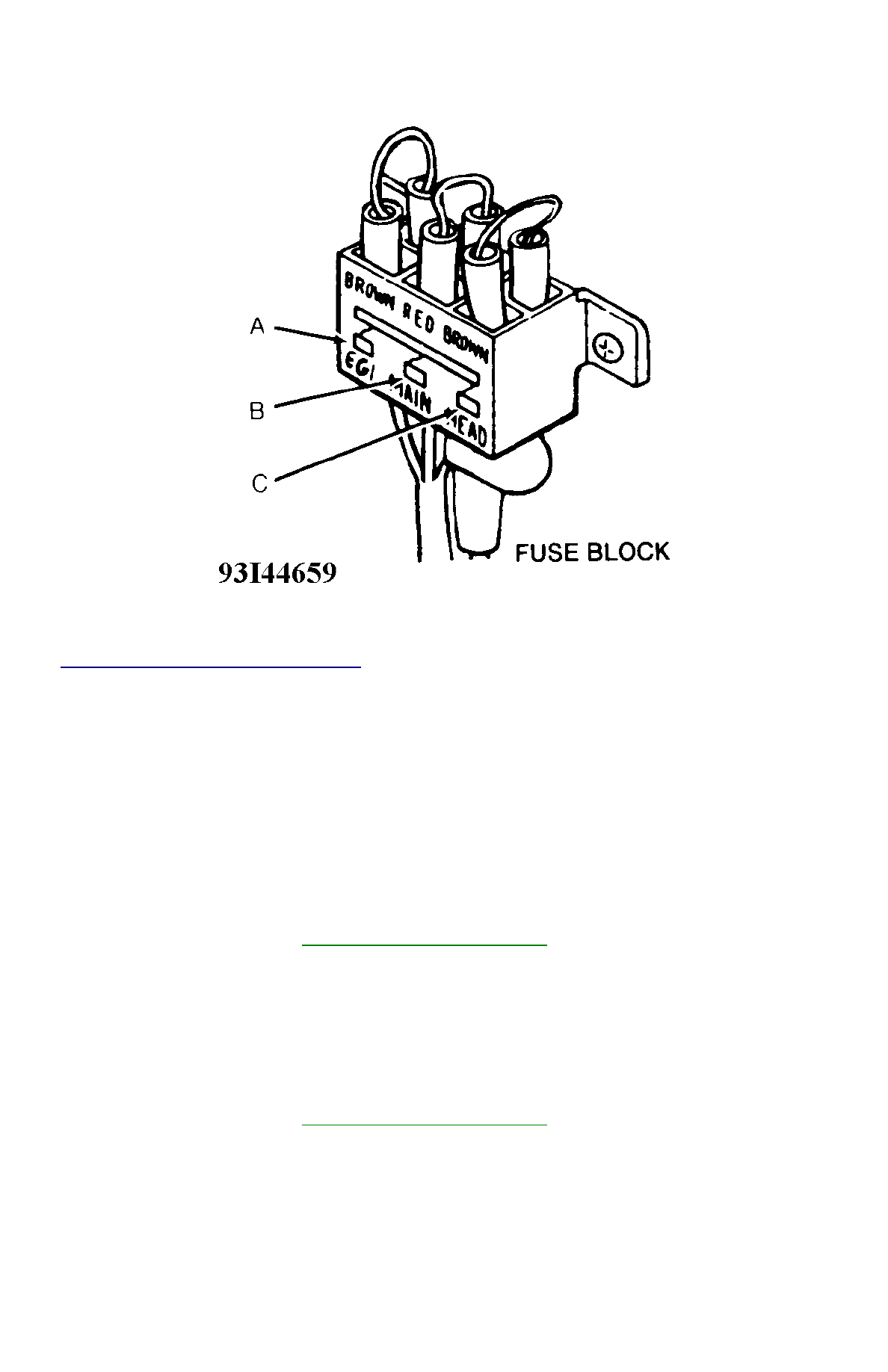Ford Festiva. Instruction - part 13

Fig. 2: Underhood Fusible Link Block Identification
Courtesy of FORD MOTOR CO.
Fusible Link Identification
A - Brown (PTC) (1988-89 Carburetor) EFE Carburetor Heater
A - Brown (EGI) (1989-93 EFI) EFI System (1989-92), EGI-EFI System (1993)
B - Red (Main) Back-Up, Interior & Parking Lights, Brakelights, Taillights, Horn, Luggage Compartment Light, Turn Signal & Hazard
Flasher Lights, Cluster & Warning Lights, Radio, Cigarette Lighter, Charging & Emission Control Systems, Wiper/Washer Systems,
A/C-Heater System, Cooling Fan System, Rear Window Defroster, Ignition & Starting Systems, Shift Lock System, Remote Control
Mirror, Ignition Key Reminder, Passive Restraint System (1990-93)
C - Brown (Head) Headlights, Daytime Running Lights, Starting & Charging System
BATTERY SPECIFICATIONS
All 1988-92 models use a BX-35 battery. The 1993 Festiva uses a 50D 20L standard battery.
CAUTIONS & WARNINGS
BATTERY WARNING
REPLACING BLOWN FUSES
Before replacing a blown fuse, remove ignition key, turn off all lights and accessories to avoid damaging the electrical system. Be sure to use
fuse with the correct indicated amperage rating. The use of an incorrect amperage rating fuse may result in a dangerous electrical system
overload.
BRAKE PAD WEAR INDICATOR
Indicator will cause a squealing or scraping noise, warning that brake pads need replacement.
CAUTION:
When battery is disconnected, vehicles equipped with computers may lose memory data. When battery
power is restored, driveability problems may exist on some vehicles. These vehicles may require a
relearn procedure. See
COMPUTER RELEARN PROCEDURES
article in the GENERAL INFORMATION
section.
WARNING:
When battery is disconnected, vehicles equipped with computers may lose memory data. When battery
power is restored, driveability problems may exist on some vehicles. These vehicles may require a
relearn procedure. See
COMPUTER RELEARN PROCEDURES
article in GENERAL INFORMATION
section.